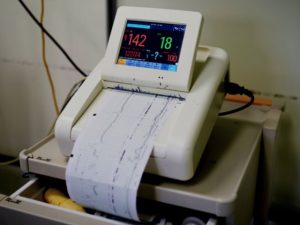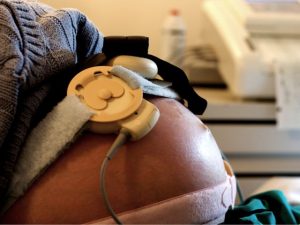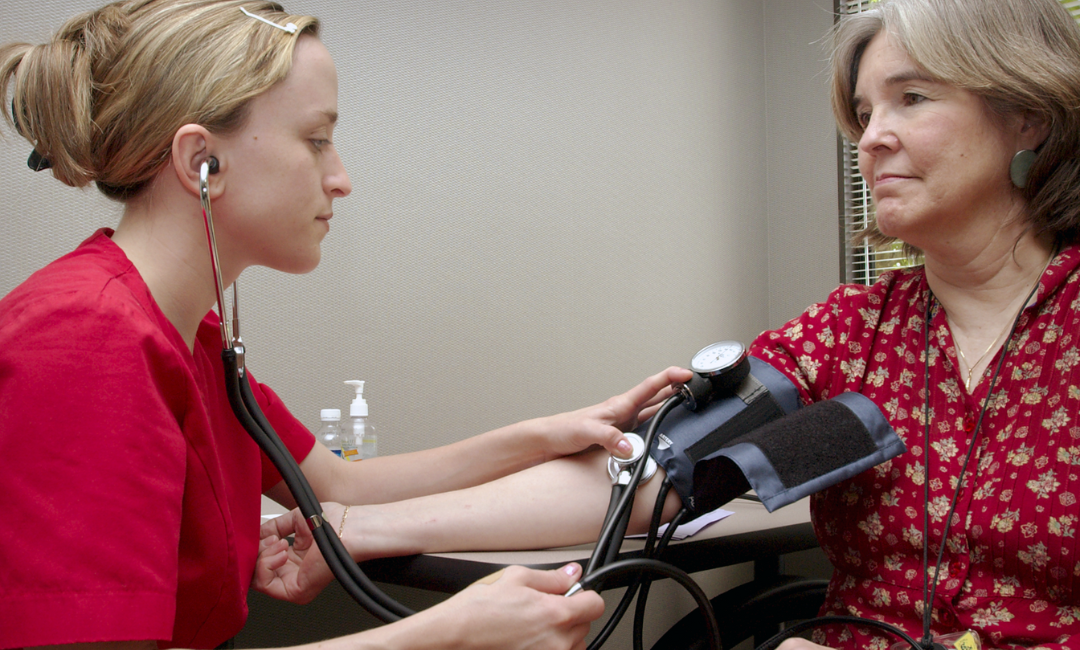Clinical Presentation of Amniotic Fluid Embolism
Patients with a witnessed AFE event may present with a sudden impending sense of doom which may be related to dyspnea and the start of cardiopulmonary collapse.
An unwitnessed AFE event is probably more common when staff respond to a deceleration observed on central monitoring.
An example is going into the room to see the fetal heart rate tracing (FHT) continuing to drop while mom is cyanotic and unresponsive.
Few clinicians have experience with AFE because it is such a rare obstetrical event. As a result, medical treatment facilities may benefit from the development of a checklist to best guide the staff in their resuscitative efforts to improve outcomes in these dire situations.
The primary goal for the treatment of an AFE is to improve the effectiveness of CPR and decrease morbidity and mortality. Therefore, if cardiac activity is not restored within 4 minutes, move to delivery.
A vaginal operative delivery is indicated if delivery is imminent, otherwise a peri-mortem c-section is recommended with delivery of the baby within 5 minutes.
CPR on pregnant women is not very effective since the blood flow to the uterus is so great and the gravid uterus compresses the inferior vena cava further decreasing the effectiveness of CPR. The best opportunity of survival is to deliver the baby asap.









